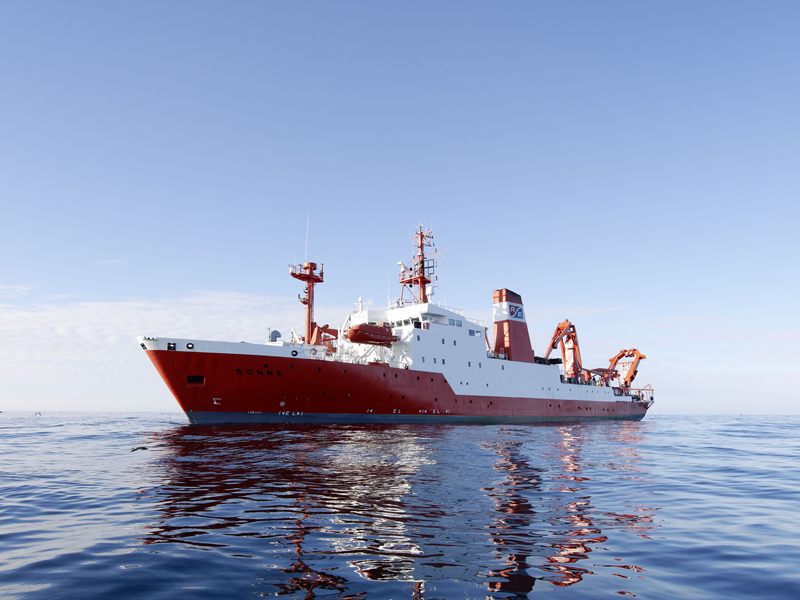SONNE (1977-2014) SO199/1
- Area:
- Christmas Island Seamounts
- Time:
-
02.08.2008 - 28.08.2008
- Institution:
- IFM-GEOMAR
- Chief scientist:
- Kaj Hoernle
The research project SO199 CHRISP (CHRistmas Island Seamount Province and the Investigator Ridge: Age and Causes of Intraplate Volcanism and Geodynamic Evolution of the South-Eastern Indian Ocean) comprises petrological, volcanological, geochemical, geochronological, geophysical, and biological studies in the area of the northern Wharton Basin (South-East Indian Ocean). The project begins with an expedition of the German research vessel “Sonne” in August/September 2008. The cruise will focus on the Christmas Island Seamount Province, a huge submarine volcanic province of unkown origin (encircled red on the map to the right), and on the Investigator Ridge, a large N-S striking fault zone in the ocean crust of the Wharton Basin. The geological and geophysical studies to be conducted on cruise SO199 include multi-beam mapping using a SIMRAD EM 120 echosounding system, sediment echosounding using a PARASOUND sub-bottom profiling system, magnetic profiling and hard rock sampling by dredge and TV-grab. The major targets of the cruise are (1) to map and sample seamounts in the northern Wharton Basin and the Investigator Ridge and (2) to record bathymetrical, sub-bottom profiling, and magnetic data in the northern Wharton Basin. The major objectives of the geological and geophysical studies are to improve our understanding of:
(1) the origin of intraplate volcanism by reconstruction of the magma sources and the temporal and spatial evolution of volcanism forming the seamounts in the northern Wharton Basin;
(2) the evolution of the “Indian Mantle Domain” (enriched geochemical signature of mid ocean ridge basalts in the Indian Ocean) by reconstructing the age and composition of the ocean crust in the northern Wharton Basin;
(3) internal deformation of oceanic plates by characterization of recent and ancient deformation of the Indo-Australian plate; and
(4) plate convergence in the southeastern Asian area by identification of ocean floor spreading anomalies.
The integration of these results with existing data should contribute towards a better understanding of the origin of intraplate volcanism and the „Indian Mantle Domain“ as well as of geodynamic processes in the eastern Indian Ocean.
Scientists from the „Museum für Naturkunde“ of Humboldt-University in Berlin will conduct the biological part of the research project. With a focus on meio- and macrofaunal key taxa, the samples will provide insight into the biogeography of the respective groups. The biological data may be used to assess results of the geological part of the project and vice versa. Notably, the benthos biology of this region is largely unknown and by collecting soft sediment samples as well as hard bottom dwelling organisms, we expect to get a representative overview of the species composition of the northern Wharton Basin.



